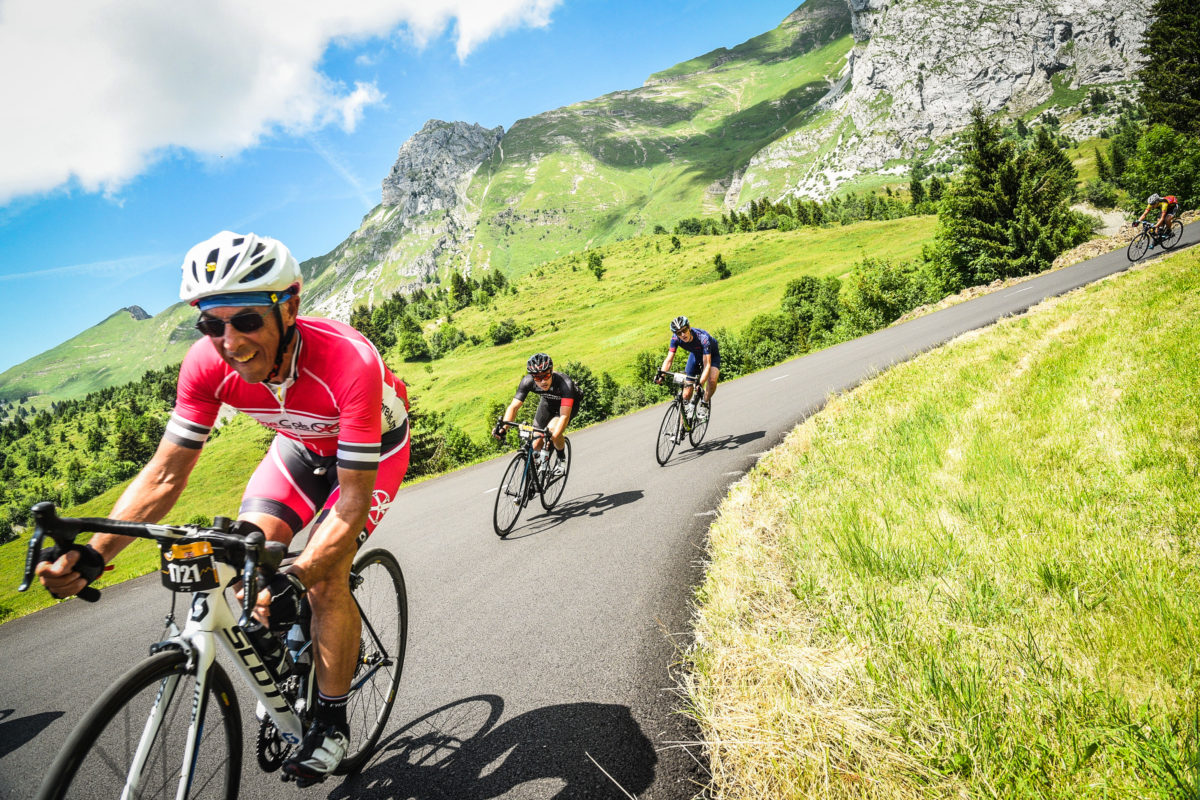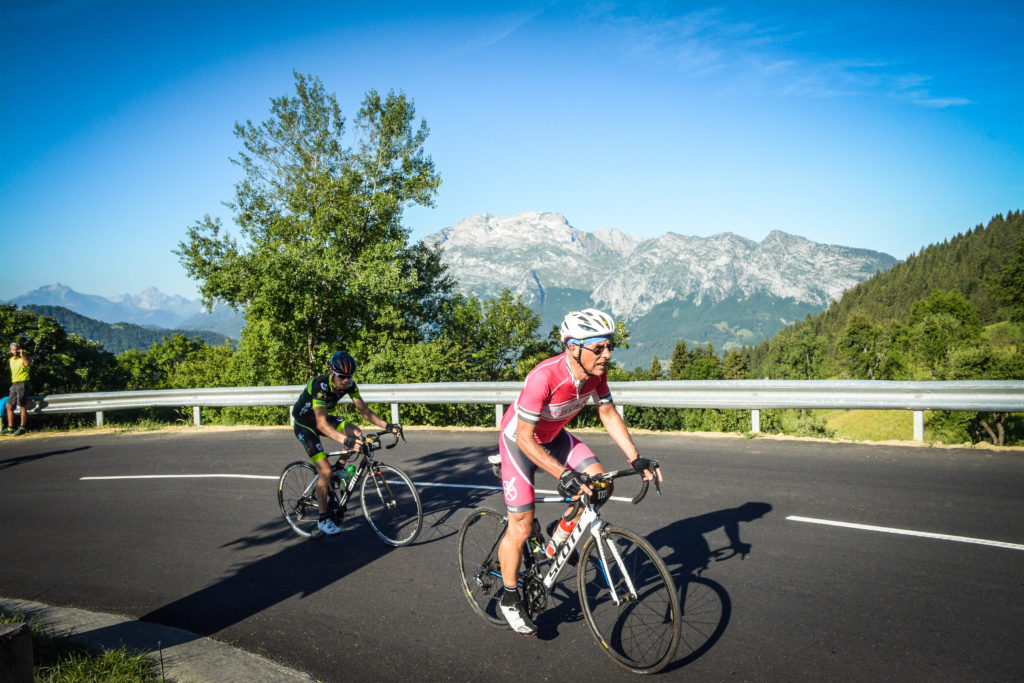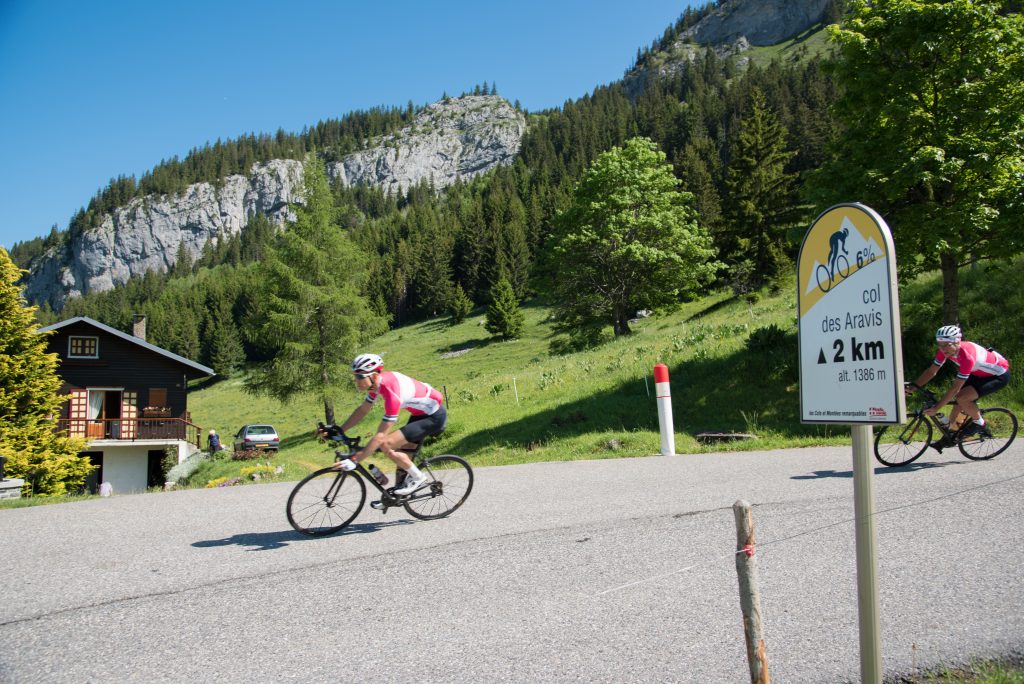
Ten ways to ride faster at a Gran Fondo, at no extra cost and with very little effort!
1. Make sure your bike is in tip-top condition
Begin with the bike. Any friction on your bike is going to slow you down. While you can’t totally eliminate it there are several things you can do to minimise friction. The first and simplest of these is to make sure your transmission is thoroughly clean and well-oiled and the chain is in good condition. To go further, check that the bottom bracket bearings, front and rear wheel bearings, pedal bearings and jockey wheels all spin freely.
When it comes time to replace your tyres, choose a set with the lowest rolling resistance (while still maintaining reasonable puncture resistance). The new Continental GP 5000 tyres are setting the standard here. Finally, make sure you have pumped them up to the correct pressure, which varies according to the size and type of tyre, your own body weight and the road conditions.
2. Start early
Whether the event is a mass start or not, it always pays to start as early as possible. The reason is due to the economy in drafting: in all but the most mountainous events you will ride much faster for the same energy if you are in a group compared to riding alone. The earlier you start, the bigger your choice of wheels to follow and groups to ride with. If the first group is too fast for you, you can ease off and join the second or third.
3. Learn to draft like a pro
Drafting is a skill that you can only learn through deliberate practice. Riding at 40km/h or more in very close proximity to other riders initially feels highly dangerous, but this is not the case so long as all stay concentrated and follow the basic rules (concentrate, be predictable, keep your line and speed, signal any dangers…).
Once you have mastered the basics, the next level is to avoid the big efforts caused by the concertina effect as the group goes around corners and through road junctions. Do this by staying in the front 5 or 6 of the peloton, where the concertina effect is much less, and by staying as close to the wheel in front of you as possible through the corners. It is often less costly in energy terms to take your turn on the front than to be forced to make frequent short sprints to stay on at the back, or to have to bridge the gap after a split in the peloton.
4. No free-wheeling
If you find yourself alone, or if you are at the front of the group, avoid the temptation to free-wheel and keep up a steady pressure on the pedals, even going downhill. The extra speed is more than worth the limited energy expenditure. The only exception to this rule is in a peloton, where it may be appropriate to free-wheel especially going downhill.
5. Climb efficiently
Eliminate parasitic movements and pedal more efficiently to reduce losses and increase the share of your energy that actually drives the bike forward. This is a vast, multi-faceted subject. Some of the key elements we work on during our coaching camps are:
Seated:
(1) Make sure your glutes are fully engaged, especially on the steeper slopes. To do this, pedal for a minute or so with your hands in the drops, tilting your pelvis forward and keeping your heels down throughout the pedal stroke. You should feel the glutes working.
(2) Unweight your pedal coming up by lifting your leg, without trying to pull up. If you don’t do this you have to push one leg up with the other, wasting energy. If you have a dual-sided power meter, aim for a torque efficiency (TE) value as close as possible to 100%.

Standing:
Stand up regularly to use the muscles differently and stretch out your back. When standing, keep the pace the same, pedal at a lower cadence and rock the bike gently with your wrists to bring the pedals under your centre of gravity at each down-stroke. Video demonstration.
Whether seated or standing, keep your upper body relaxed and still. Any energy you use to tense your shoulders or grip the handlebars is not available to climb the hill!
6. Cresting
You can gain a big advantage by keeping your effort from the climb steady and stable over the crest and into the first part of the descent. Even better, stand on the pedals and accelerate over the crest. It is possible to gain hundreds of metres on other riders who slow up and take a rest as they approach the top of the climb. The time to rest is in the descent, not over the crest!
7. “Bottoming”
The opposite of cresting is descending to the bottom of a valley and immediately climbing again.
Here’s how to do it right: descend fast, in your highest gear, and accelerate hard across the bottom and into the rise. As the road starts to ramp up change gear progressively on the cassette to keep a steady, moderately high power output as your speed drops away. Once you reach the middle of the cassette drop the chain to the lower chain ring and settle into your climbing pace and rhythm for the rest of the climb.
Look out for other riders in front of you free-wheeling down the descent and fanning out across the road as they find themselves in the wrong gear and slow down: be ready to shout and pass on the left (in continental Europe) or on the right (in the UK).
8. Gain free speed on the descent
Climbing is partly technique, partly physical fitness. Descending is all technique! The better your descending skills, the faster and safer you will be. The difference between a good and an average descender on a typical Alpine descent is counted in minutes, and the more highly-skilled riders are safer too.

There are no short cuts to learning to descend well. Self-coaching will only take you so far. The best way to learn is through deliberate practice on a coaching camp in the Alps. Consider it: accidents due to poor technique happen all the time. Your life might literally depend on it!
9. Minimise the stops
Rather obviously, the less you stop, the faster your average speed (all things being equal). Keep your stops to the absolute minimum necessary to refill bottles, pick up food and take a natural break. You should practice eating on the bike so that you are comfortable doing this during a race.
The same goes for taking off or putting on jackets or arm-warmers, with the proviso that riding hands-free to put a jacket on in the wind is dangerous and you should only attempt it if you are totally confident. Better to lose a minute than crash stupidly…
10. Feed the machine
One of the most common mistakes even experienced cyclists make is to forget to eat or drink enough. You will expend from 4000 to 6000 calories during events like the Etape du Tour or the Marmotte and this energy must come from somewhere. Fail to eat enough and you are bound to slow down after the first 2-3 hours.
You need to start by eating a carbohydrate-rich diet in the three days prior to the event, and then consume at least 60g of carbs per hour from start to finish. Since a typical gel, energy bar, banana or bottle of energy drink each contain 25-30g of carbs, this means aiming at approximately one bottle per hour plus 1 – 2 gels or energy bars. Check whether the gels you have are mostly slow-release or mostly quick-release and use the former during the early part of the event, reserving the latter for the final climb or the run-in to the finish.
Joker: Join a coaching camp!
We teach all the above techniques (and many more) during our GranFondo coaching camps.